#Battle of Marathon: The Helmet With the Soldier’s Skull Still Inside
Photo
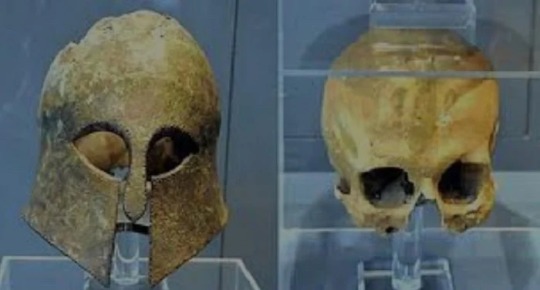
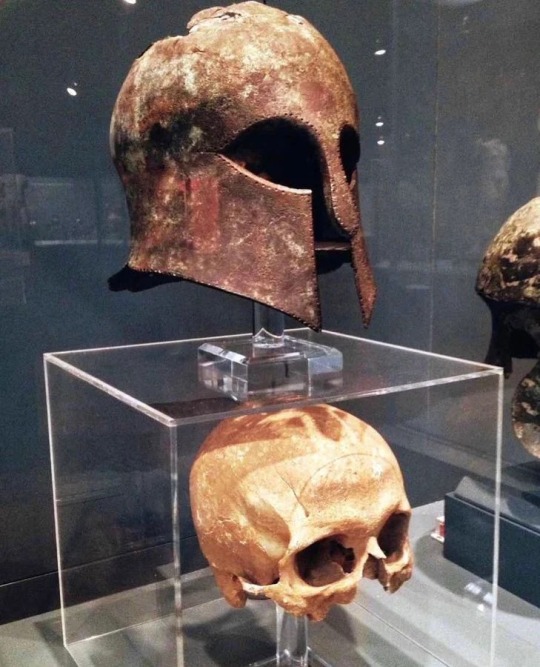
Battle of Marathon: The Helmet With the Soldier’s Skull Still Inside
This remarkable Corinthian-style helmet from the Battle of Marathon was reputedly found in 1834 with a human skull still inside.
It now forms part of the Royal Ontario Museum’s collections, but originally it was discovered by George Nugent-Grenville, who was the British High Commissioner of the Ionian Islands between 1832-35.
A keen antiquarian, Nugent-Grenville carried out a number of rudimentary archaeological excavations in Greece, one of which took place on the Plains of Marathon, where the helmet was uncovered.
A pivotal moment in Ancient Greek history, the battle of Marathon saw a smaller Greek force, mainly made up of Athenian troops, defeat an invading Persian army.
There were numerous casualties, and it appears that this helmet belonged to a Greek hoplite (soldier) who died during the fighting of the fierce and bloody battle.
The Athenian army under General Miltiades consisted almost entirely of hoplites in bronze armor, using primarily spears and large bronze shields. They fought in tight formations called phalanxes and literally slaughtered the lightly-clad Persian infantry in close combat.
The hoplite style of fighting would go on to epitomize ancient Greek warfare.
Today the helmet and associated skull can be viewed at the Royal Ontario Museum’s Gallery of Greece.
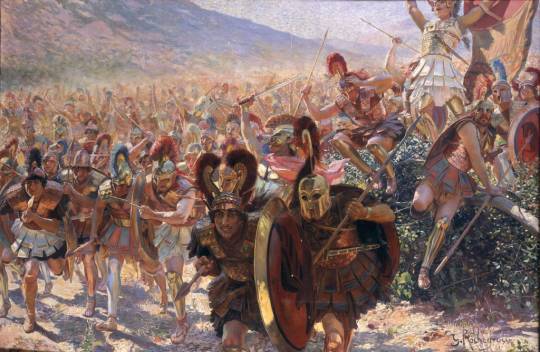
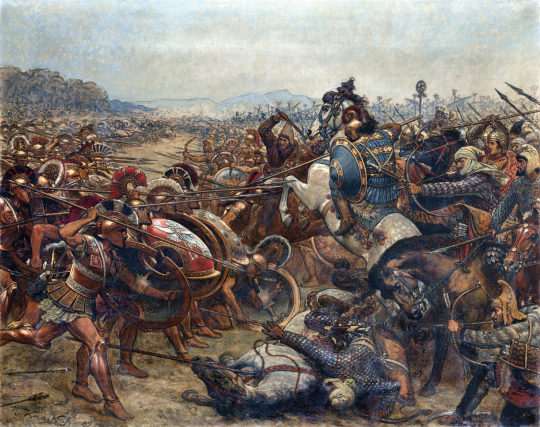

Battle of Marathon saved Western Civilization
It was in September of the year 490 BC when, just 42 kilometers (26 miles) outside of Athens, a vastly outnumbered army of brave soldiers saved their city from the invading Persian army in the Battle of Marathon.
But as the course of history shows, in the Battle of Marathon, they saved more than just their own city: they saved Athenian democracy itself, and consequently, protected the course of Western civilization.
According to historian Richard Billows and his well-researched book Marathon: How One Battle Changed Western Civilization, in one single day in 490 BC, the Athenian army under General Miltiades changed the course of civilization.
It is very unlikely that world civilization would be the same today if the Persians had defeated the Athenians at Marathon. The mighty army of Darius I would have conquered Athens and established Persian rule there, putting an end to the newborn Athenian democracy of Pericles.
In effect, this would certainly have destroyed the idea of democracy as it had developed in Athens at the time.
The Battle of Marathon lasted only two hours, ending with the Persian army breaking in panic toward their ships with the Athenians continuing to slay them as they fled.
In his book, however, Billows calls the Battle of Marathon a “miraculous victory” for the Greeks. The victory was not as easy as it is often portrayed by many historians. After all, the Persian army had never before been defeated.
By Tasos Kokkinidis.


#Battle of Marathon: The Helmet With the Soldier’s Skull Still Inside#greek helmet#persian army#general miltiades#king darius i#ancient artifacts#archeology#archeolgst#history#history news#ancient history#ancient culture#ancient civilizations#ancient greece#greek history#long reads
87 notes
·
View notes
Photo
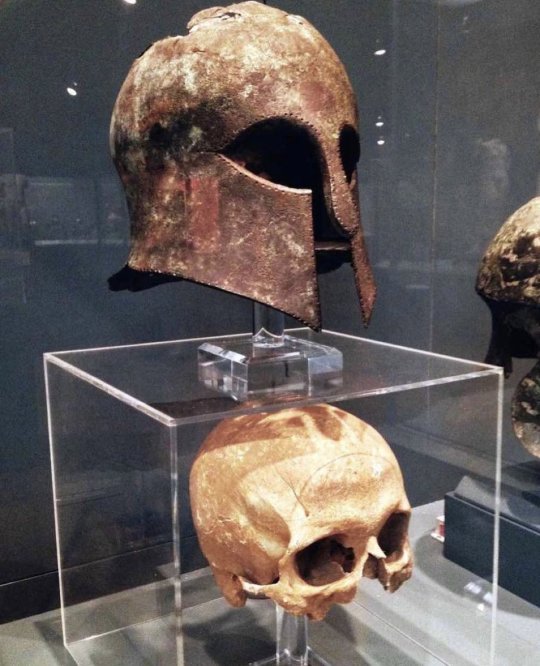
Corinthian helmet found with the soldier’s skull still inside from the Battle of Marathon which took place in 490 BC during the first Persian invasion of Greece.
2,500 years ago, on the morning of September 12th, 10,000 Greek soldiers gathered on the plains of Marathon to fight…
#helmet#the Battle of Marathon#with the soldier's skull still inside#Greece#Persian invasion#Greek soldiers#Marathon#fight#museum#photo
124 notes
·
View notes
Text



Corinthian helmet found with the soldier's skull still inside from the Battle of Marathon which took place in 490 BC during the first Persian invasion of Greece.
2,500 years ago, on the morning of September 12th, 10,000 Greek soldiers gathered on the plains of Marathon to fight the invading Persian army. The Greek soldiers were composed mostly of citizens from Athens as well as some reinforcements from Plataea. The Persian army had 25,000 infantrymen and 1,000 cavalry.
According to legend, a long-distance messenger by the name of Phidippides was sent to Athens shortly after the battle to relay the news of victory. It has been said that he ran the entire distance from Marathon to Athens, a distance of approximately 40 kilometres (25 mi), without stopping, and bursted into the assembly to declare, "We have won!", before collapsing and dying. This story differs quite a bit from Herodotus' account which mentions Phidippides as the messenger who ran from Athens to Sparta, and then back, covering a total distance of 240 km (150 mi) each way.
#history#sparta#spartan#this is sparta#persia#Greece#war#battle#lonely planet#vibes#good vibes#lifestyle#style#aes#aesthetic#aesthetics#helmet
100 notes
·
View notes
Photo

This remarkable Corinthian style helmet from the Battle of Marathon was reputedly found in 1834 with a human skull still inside. It now forms part of the Royal Ontario Museum’scollections, but originally it was discovered by George Nugent-Grenville, who was the British High Commissioner of the Ionian Islands between 1832-35.
A keen antiquarian, Nugent-Grenville carried out a number of rudimentary archaeological excavations in Greece, one of which took place on the Plains of Marathon, where the helmet was uncovered.
A pivotal moment in Ancient Greek history, the battle of Marathon saw a smaller Greek force, mainly made up of Athenian troops, defeat an invading Persian army. A fierce and bloody battle, with numerous casualties, it appears that this helmet belonged to a Greek hoplite (soldier) who died during the fighting.
Today the the helmet and associated skull can be viewed at the Royal Ontario Museum’s Gallery of Greece.
Source
191 notes
·
View notes
Photo

At the Battle of Marathon, a vastly outnumbered force of Greek hoplites saved Athenian democracy and protected the course of Western civilization.
Credit: Royal Ontario Museum
#Battle of Marathon#Greek#Western civilization.#Helmet#Soldier’s Skull Still Inside#photo#museum#antique#royal ontario museum#photography
48 notes
·
View notes